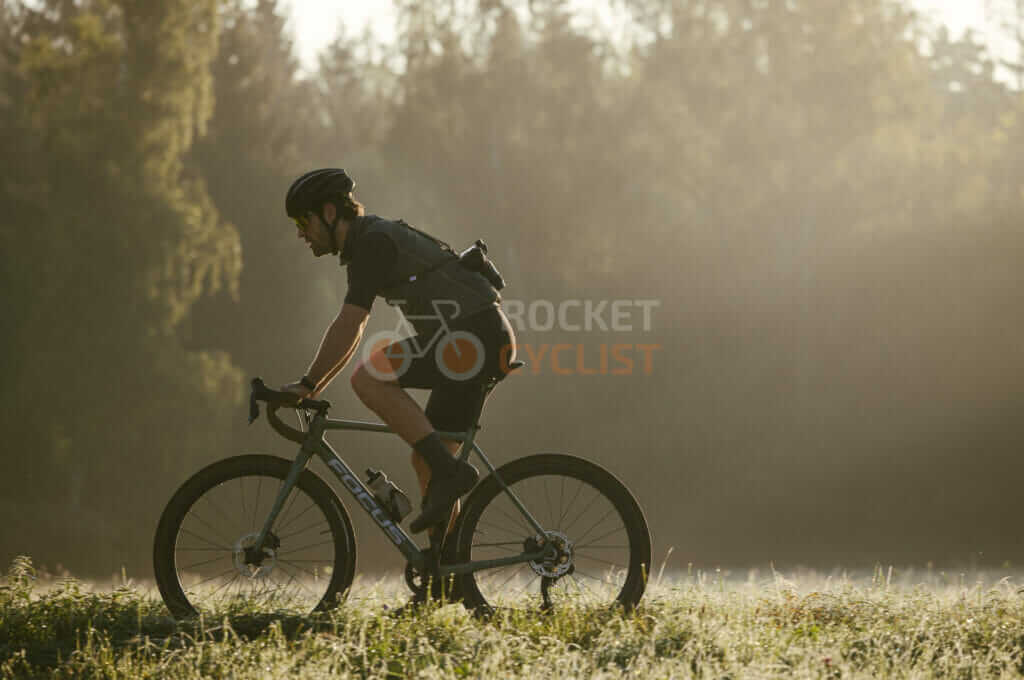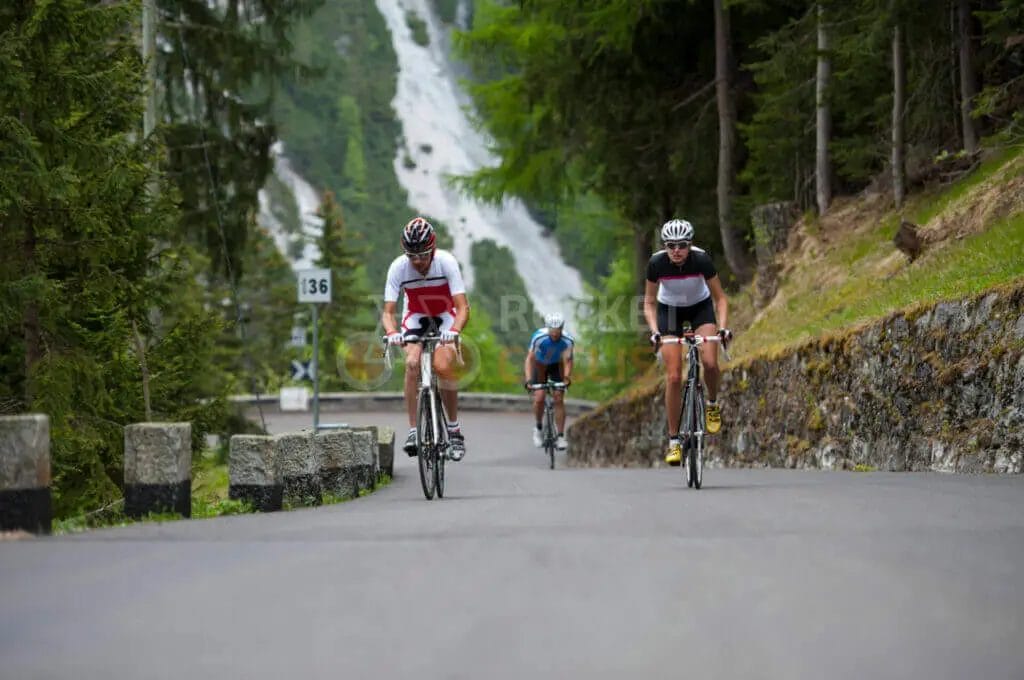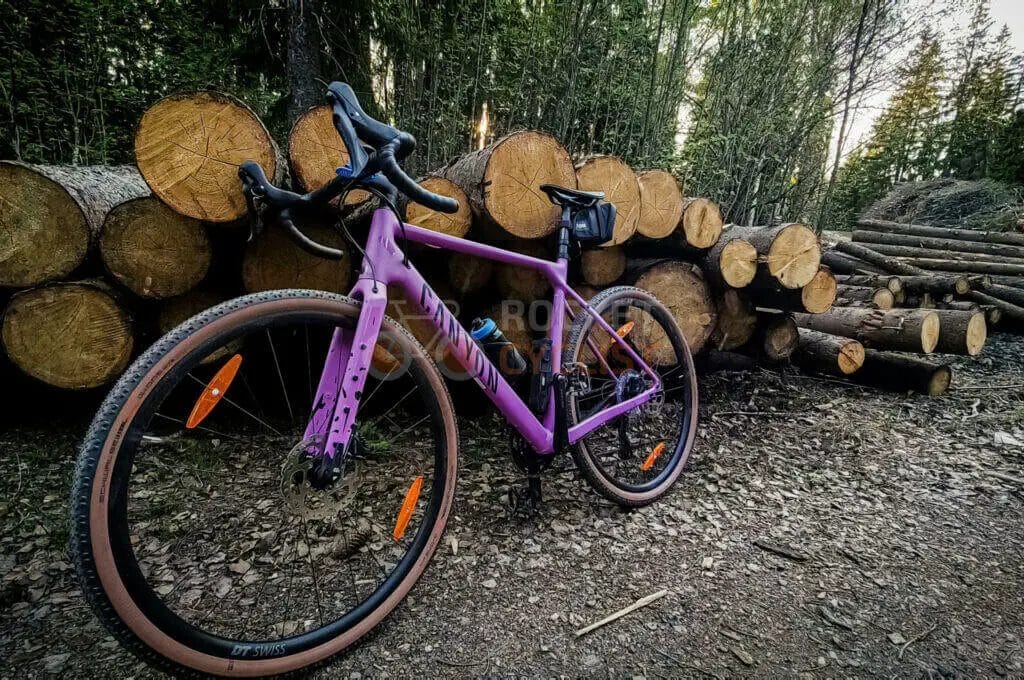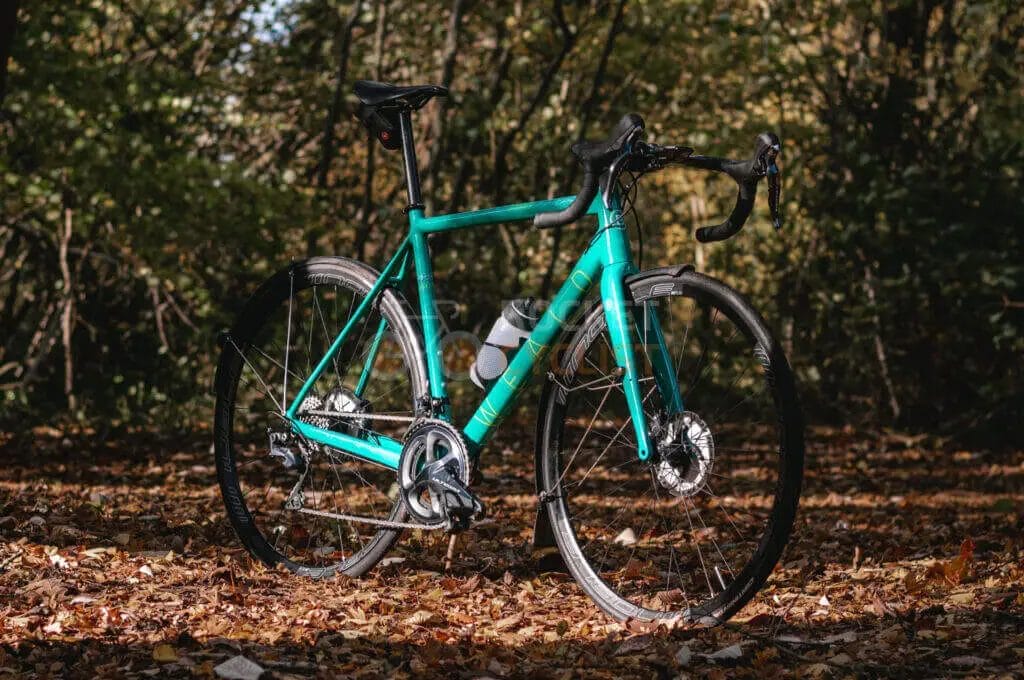Last Updated on March 26, 2024 by Vinson Lozano
Have you ever wondered if you could put gravel tires on your trusty road bike? If you’re looking to explore more roads and take on different terrains but don’t want to buy a whole new bike, swapping in wider tires could be the solution you need.
In this post, we’ll explore how you can set up your road bike for gravel riding, including practical options for you to experience gravel riding with your road bike, gravel tire options for road bikes, and other important things to consider when switching tires on your road bike.
So whether you’re a seasoned road cyclist looking to switch things up or a beginner wanting to expand your horizons, read on to find out everything you need to know about gravel bike tires on a road bike.

Why switch gravel tires on a road bike?
Using gravel tires on a road bike is becoming more common among cyclists who want to explore off-road terrain but don’t want to invest in a separate gravel bike.
By swapping to wider tires, riders can increase the capabilities of their road bikes and tackle gravel roads with more comfort and control.
Gravel tires have several advantages over standard road bike tires. They offer more grip and stability on loose surfaces and can absorb more shocks, making the ride smoother.
The main consideration when swapping to gravel tires is finding the maximum tire clearance for your road bike. This will determine the width of the tire you can fit on your bike.
Additionally, tire pressure is essential on rough terrain, so be sure to adjust it according to the conditions. Popular gravel tire options include the Panaracer GravelKing Slick, GravelKing SS, and GravelKing SK, which offer varying levels of tread and durability. Whether to swap tires or entire wheelsets comes down to personal preference and budget.
Importance of increasing the capabilities of a road bike

When it comes to road biking, having a bike that can handle different types of terrain opens up a whole world of possibilities. By increasing the capabilities of your road bike with wider and more versatile tires, you can ride on unpaved paths and explore new routes.
Here are some reasons why increasing the capabilities of your road bike is important:
- It allows you to ride on gravel roads and dirt paths, which can lead to beautiful scenery and new adventures.
- Wider tires with extra tread provide better traction and stability on rough terrain, making your ride safer and more comfortable.
- Swapping out tires for different terrains can give you more flexibility in choosing your route and adjusting to changing conditions.
- Having a bike that can handle a variety of terrains can make it more versatile and useful for different types of rides, from leisurely cruises to more challenging routes.
Overall, increasing the capabilities of your road bike with gravel tires can broaden your horizons and enhance your cycling experience.
Riding Gravel on a Road Bike
Exploring gravel roads on road bikes
Gravel cycling has been around for many years, with road cyclists gradually beginning to explore unpaved roads with their bicycles. The trend began with cyclists looking for more challenging routes, and for adventure, as they were seeking new paths and experiences beyond the pavement.
The popularity of gravel biking has skyrocketed in recent years, with riders utilizing thicker tires to explore America’s 2.2 million miles of unpaved roads.
The emergence of gravel bikes has allowed riders to explore a wide variety of terrains, from smooth trails to chunky gravel, without sacrificing speed or comfort. In addition, there are now dozens of gravel races across the country, making gravel cycling an exciting and accessible option for any cyclist seeking adventure beyond the pavement.
Advantages of wider gravel tires

Wider gravel tires provide various advantages that make them a great option for road bikes. Here are some advantages of using wider gravel bike tires on your road bike:
- Better Traction: Wider tires have a larger surface area to make contact with the ground, which enhances traction and stability on loose or uneven surfaces.
- Improved Comfort: Wider tires can absorb more shocks and vibrations, providing a smoother and more comfortable ride.
- Lower Pressure: Wider tires can be run at a lower pressure, which further improves comfort and traction on rough terrain.
- Better Handling: Wider tires provide better cornering stability and control, particularly on loose or slippery surfaces.
- Reduced Puncture Risk: Wider tires typically have thicker rubber casing, which provides better protection against punctures.
Considering these advantages, switching to wider gravel tires could significantly increase the capabilities of your road bike and enhance your riding experience.
Main consideration for swapping to gravel tires
One the main considerations for swapping to gravel tires on a road bike is the type of terrain you will be riding on. Gravel tires offer better traction, stability, and control on loose surfaces, making them ideal for off-road adventures.
Here are some other factors to keep in mind when making the switch:
1. Tire Clearance: Check your bike’s tire clearance to determine the maximum width of tire you can use. Most road bikes have limited clearance, so you may need to choose a narrower gravel tire or consider swapping to an endurance or cyclocross bike.
2. Tire Pressure: The right tire pressure can make all the difference on gravel. Lower pressure provides better traction and absorbs bumps, but it can also make your ride sluggish. Experiment to find the sweet spot for your riding style.
3. Panaracer GravelKing Tires: These tires come in three variations (Slick, SS, and SK) and are popular options for gravel riding. The Slick version offers a smooth ride on pavement, while the SS and SK have more aggressive treads for off-road adventures.
Swapping to gravel tires is a simple and affordable way to increase the capabilities of your road bike and explore new terrain. Just be sure to choose the right tires for your needs and check your tire clearance and pressure for optimal performance.
Maximum tire clearance for a road bike
When swapping gravel tires onto your road bike, one of the main considerations is tire clearance. Most road bikes can fit tires in the 25-32mm range, while gravel bikes can accommodate 40-45mm tires.
Before buying tires, it’s important to look up the maximum tire clearance for your road bike. This information will help narrow down your tire choices. If you select the widest tires your bike can fit, you can run the lowest tire pressures possible, which can increase your comfort and traction on gravel.
If your bike doesn’t have a listed maximum tire width, the ISO standard is to have at least 6mm of clearance between your tire and any part of the frame. Daring riders may push this to around 4mm, but be cautious as going too wide may cause the tire to rub against the frame, causing damage.
Importance of tire pressure on gravel

When comes to gravel riding, tire pressure plays a crucial role in providing comfort, traction, and speed. Here are some facts to consider when it comes to tire pressure on gravel:
- Running a tubeless gravel tire setup allows for much lower tire pressure compared to running tubes. This feature offers extra traction and suspension when riding on technical and rough terrain.
- Finding the appropriate tire pressure means finding a balance between rolling resistance and comfort. It is advisable to start at the high end of the PSI range for your tire width and work down from there until you find a comfortable pressure.
- Lighter riders can run lower PSI compared to heavier riders, and bikepacking or carrying a load of gear may require slightly different tire pressures for each tire.
- Running too high tire pressure can lead to a bumpy and uncomfortable ride, while running too low tire pressure can lead to pinch flats and other puncture issues.
- There is no “one size fits all” tire pressure recommendation since each rider’s preferences can vary based on terrain, weight, and other factors.
In conclusion, tire pressure plays a crucial role in gravel riding, and it is essential to find the right pressure to optimize comfort, speed, and traction.
Best Options for Road Bike Gravel Tires:
Panaracer GravelKing Slick
Panaracer GravelKing Slick is a go-anywhere tire that caters to cyclists looking to expand their cycling horizons. The tire is versatile and can handle gravel, dirt, rough and smooth pavement. It’s available in black tread and black or brown wall colors in 700 C and 27.5 sizes, and a variety of widths, making it a suitable option for different types of riders.
The GravelKing Slick uses a natural rubber compound for puncture protection, a breaker for added durability, and a special low rolling resistance casing for a smooth ride. At 309g per tire, it’s relatively lightweight and has a low rolling resistance, making it an excellent option for those looking for a fast tire that can also take on rough terrain.
Panaracer GravelKing SS
The Panaracer GravelKing SS is a versatile tire that can be used on a variety of terrains such as gravel and paved roads. With its nearly-slick center tread and bigger knobs on the edges, this tire provides excellent control and speed through corners on gravel roads.
The GravelKing SS incorporates a supple 126 TPI casing with a nylon puncture-resistant belt and Panaracer’s proprietary ZSG (Zero Slip Grip) compound, which provides traction on loose and wet surfaces.
The TLC (Tubeless-Compatible) version of the GravelKing SS can be used with an inner tube or in a tubeless setup with sealant. Additionally, the GravelKing SS features an Anti-Flat Casing, adding an extra layer of puncture-resistant material running from bead to bead. Its increased strength and durability make it an excellent choice for riders who want a solid tire that can last longer.
Panaracer GravelKing SK
Panacer GravelKing SK tires are designed for the hardcore roads, featuring an aggressive tread compared to the standard GravelKing tire. The ZSG Natural rubber compound used in these tires provides optimal natural puncture protection and grip.
The GravelKing SK tires have raised knobs through the central patch and more sizable blocky shoulder knobs, offering confidence and support while cornering. These tires have an AX-α low rolling-resistance casing and anti-flat puncture protection breaker, allowing them to roll even on rough terrain.
They support inflation pressures of up to 60 PSI when used in a tubeless setup with widths of 32mm or larger.
Swapping Tires vs. Swapping Wheelsets:

Practical Option
When it comes to swapping out your road bike tires for gravel tires, you have a few options to consider. The practicality of each option depends on your specific needs and preferences.
Firstly, you can opt for the Panaracer GravelKing Slick, a smooth tire designed with a slick center that provides sufficient control on the road and a more aggressive tread on the sides to handle gravel. If you plan on doing more road riding with occasional detours onto gravel roads, this is likely the most practical option for you.
Alternatively, the Panaracer GravelKing SK features a knobby tread pattern that offers more grip and traction on rough terrain, making it a solid choice for those who prioritize off-road riding.
Finally, the Panaracer GravelKing SS sits in between the previous two options, providing a middle ground that can handle both road and gravel terrain with ease.
Ultimately, the most practical option for you comes down to your individual riding needs and preferences, as each tire offers its own unique advantages.
Considerations for swapping entire wheelsets

Swapping entire wheelsets can be a great solution for riders who frequently switch between on-road and off-road terrain. It allows them to easily switch between tire setups and improve the bike’s performance on each type of terrain. When considering swapping wheelsets, there are a few important things to keep in mind:
- Budget: Swapping wheelsets can be expensive, so it’s important to consider your budget before making the switch. Look for affordable options that still meet your needs.
- Compatibility: Make sure the new wheelset is compatible with your bike’s frame, brake type, and drivetrain.
- Tire clearance: Ensure that the new wheelset allows for the maximum tire clearance on your bike to prevent any fitment issues.
- Riding preferences: Choose a wheelset that is appropriate for your riding style and the type of terrain you frequently encounter.
By carefully considering these factors, riders can choose the best wheelset for their needs and significantly increase their bike’s capabilities.


